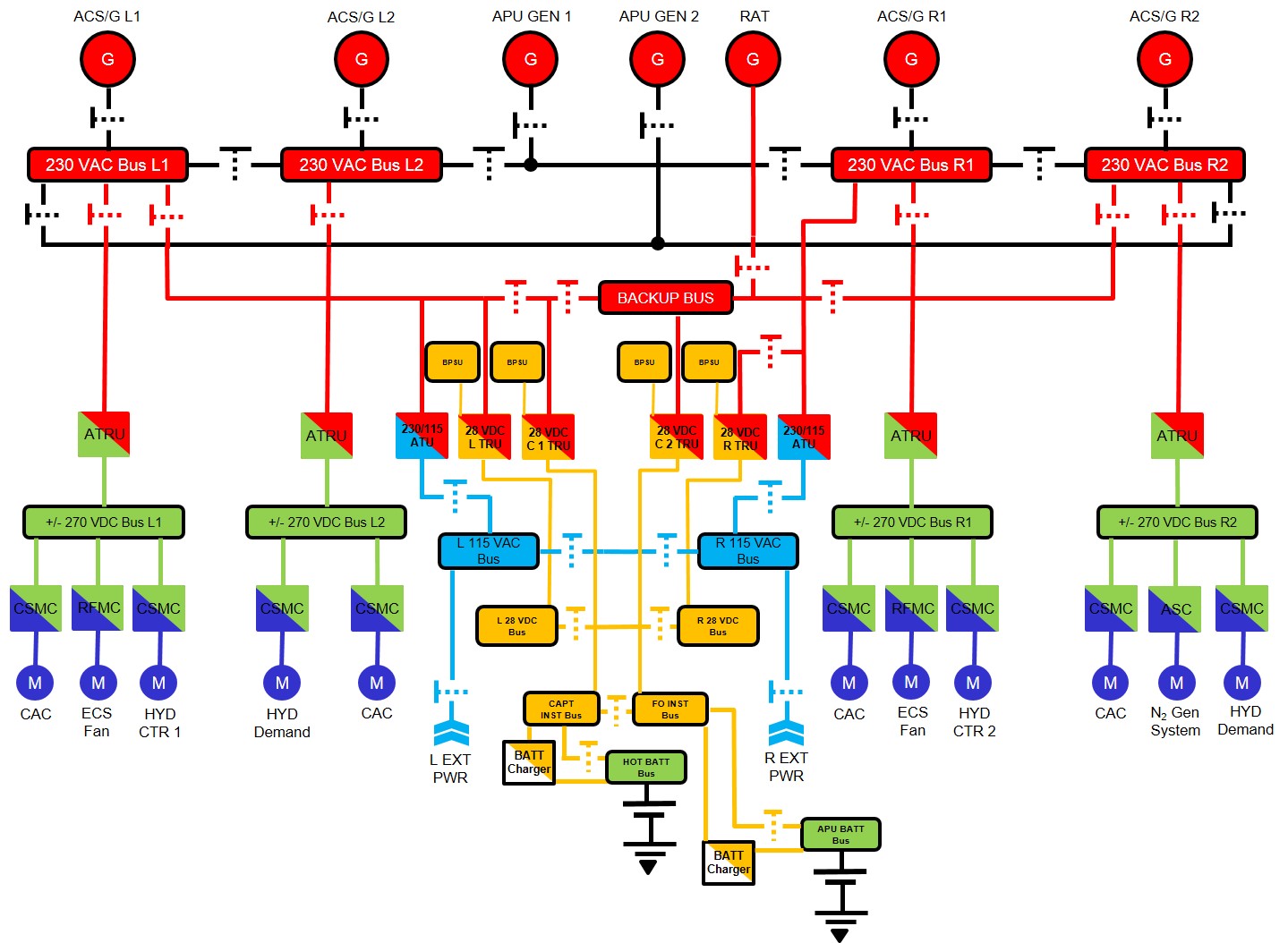Electrical Systems
Posted: Mon Apr 03, 2017 9:54 pm
Hi,
First of all, great forum. I learned a lot reading the past posts
I am trying to understand how electrical systems work on aircraft.
My understanding is that it is split between Generation. Distribution and Conversion. The components of conversion is pretty straight forward but I find generation and distribution a bit more confusing.
- How does the generation actually start, There is an APU start and an engine start? Do all aircraft have both? Is it always an electric start or is mechanical sometimes?
- Do all generators have a control unit?
- Do all aircraft have primary and secondary distribution? Is it dependent on the size of the aircraft?
- Where could I find information on the suppliers of generation, distribution equipment? in particular APu & engine electric start
Thanks for your help!
First of all, great forum. I learned a lot reading the past posts
I am trying to understand how electrical systems work on aircraft.
My understanding is that it is split between Generation. Distribution and Conversion. The components of conversion is pretty straight forward but I find generation and distribution a bit more confusing.
- How does the generation actually start, There is an APU start and an engine start? Do all aircraft have both? Is it always an electric start or is mechanical sometimes?
- Do all generators have a control unit?
- Do all aircraft have primary and secondary distribution? Is it dependent on the size of the aircraft?
- Where could I find information on the suppliers of generation, distribution equipment? in particular APu & engine electric start
Thanks for your help!


